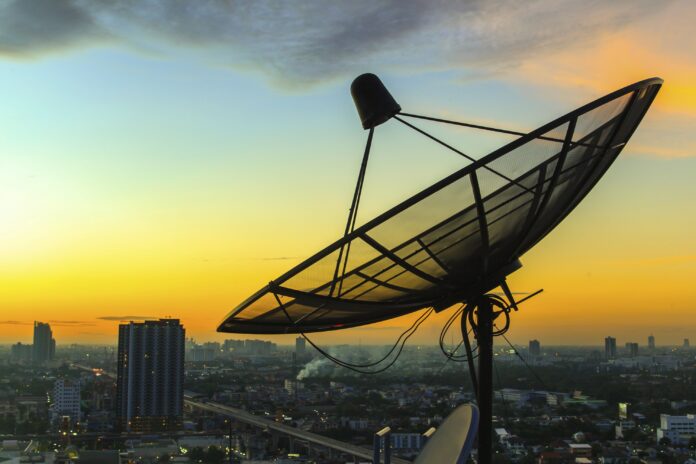How does a supposedly tech-related business somehow see less business in a pandemic year? This is the conundrum that Pak Datacom finds itself in. In a notice to the Pakistan Stock Exchange sent on December 4, the company revealed its figures for the year 2020, ending on June 30 – and they were not kind.
The company’s revenue had stood at Rs947 million in fiscal year 2019; the same figure in 2020 stood at Rs770 million. Somewhere along the way, the company must have stumbled, because the company’s net profit in 2020 stood at Rs7.4 million; in 2019, the net profit had been Rs143 million. Put another way, that represents a 95% drop in profit in just one year. The company’s earnings dropped from Rs14.59 per share in 2019, to just Rs0.76 per share in 2020.
What happened? In reality, the real mystery is not why 2020 was such a bad year; it’s how was the year 2019 such a good year.
First, some context: Pak Datacom Limited is a subsidiary of Telecom Foundation. That particular foundation was set up in November 1991, as a charitable trust to take up welfare activities primarily for the employees (both retired and serving) of the government of Pakistan’s communication companies: think Pakistan Telecommunication Company Ltd. (PTCL), Pakistan Telecommunication Authority (PTA), National Telecommunication Corporation (NTC), and Frequency Allocation Board (FAB) (Pakistan’s radio spectrum authority). The foundation works under the Ministry of Information Technology.
Pak Datacom was set up shortly after the foundation itself, in July 1992, and was converted into a public limited company in June 1994. Telecom Foundation owns 55% of the company, while State Life Insurance company has a nearly 8% share, and National Bank of Pakistan holds 7%. Interestingly, one of the directors of the company, Basit Waheed, owns 15.5% of the company, though he resigned from the board just the same year.
Pak Datacom should actually be viewed through the prism of the 1990s: that decade was the beginnings of Pakistan’s data and telecommunications networks. In fact, most of the aforementioned companies were also set up in the 90s, as part of the (very, very slow) digitization process of Pakistan. In fact, the first IT policy at a national level was only set up in the year 2000.

Pak Datacom was set up to operate and maintain a network of data communication, and to serve the needs of the subscribers against approved tariff charges. It is also authorized to carry out any business related to communication or IT, subject to licences from the PTA. Today, the company has 13 offices in the country, 11 maintenance centers, and more than 75 engineers. It is also present in 55 cities across the country.
That is impressive for a company that barely any average Paistani has heard of, unlike its much more well-known siblings, PTCL or PTA (famous for bans, of late). That is because Pak Datacom deals in much more technical, but ultimately critical, infrastructure in B2B settings, mostly clients who are multinational companies or foreign missions in Pakistan who need specific networks. Indeed, both Pak Datacom’s website and annual report feature a litany of technical acronyms that require much decoding. Broadly speaking, the company deals in optical fiber, radio, and satellites.
Satellites have different bands, such as C-band (4-8 Ghz, used for TV networks), K-band (12-18 Ghz, used for satellite communication) and Ka-band (26–40 GHz, used for radars on military aircraft). Pak Datacom provides all of these bands, mostly to banks, government department, oil and gas companies, and even United Nations organizations, in Karachi, Lahore, Islamabad, Peshawar and Quetta.
It also offers Digital Cross Connect (DXX) (a form of high speed data connectivity), in 62 cities across Pakistan. It also won a bid to provide hundreds of wireless radio links to an unnamed financial institution, and provides the optic fiber that connects banks to international credit card networks like Visa, Mastercar and China Union Pay.
Yet, for all of that, it has had pretty middling years. Its revenue between 2014 and 2018 hovered between the Rs700 million mark (its peak was in 2018, at Rs798 million). In 2016, revenue actually fell to Rs655 million, and profit after tax stood at Rs37 million.

The year 2016 was also the year of Pak Datacom’s scandal: essentially, the company’s chief executive at the time, Brigadier (retired) Muhammad Irshad Khan Kayani, stayed on in office, despite his three-year service contract expiring. Apparently, he got a three year extension from the board, but according to the SECP, the CEO could only be hired through a competitive process. What made it funnier is that apparently the Ministry of Information Technology repeatedly asked Kayani to leave, but he would not budge (he eventually did: the current CEO is Syed Jamal Nasir).
The turning point for the company was 2019, when revenue stood at Rs947 million. But the company’s relatively higher profit was buoyed by finance income of Rs89 million, which is interest income on funds invested. The next year, 2020, saw finance income of only Rs6 million, affecting that year’s profit. That year also saw revenue fall to the same Rs700 million mark.
As the company itself put it: “Without increasing the product verticals, it is very difficult to generate significant revenue from the existing saturated market segment.” It seems it is stuck in a fix, that has very little to do with the pandemic. Still, the company has said it will concentrate on the core business of DXX and satellite- based data services in the future, to boost revenue.
























